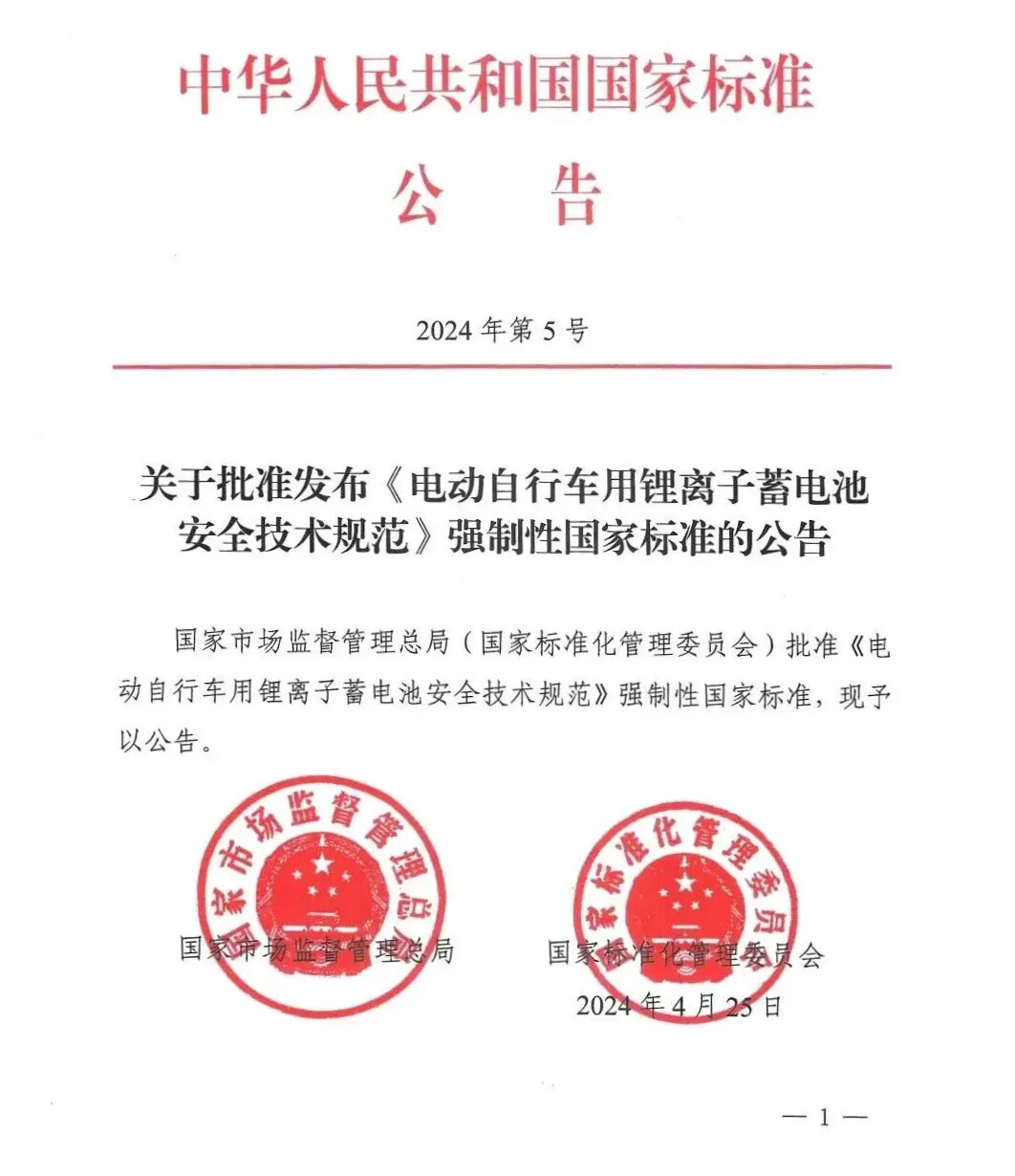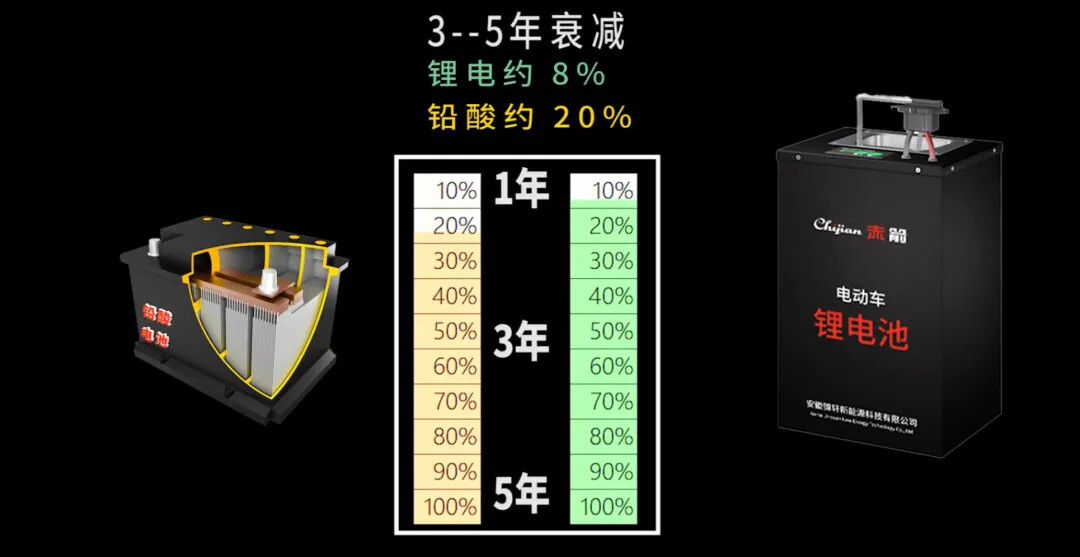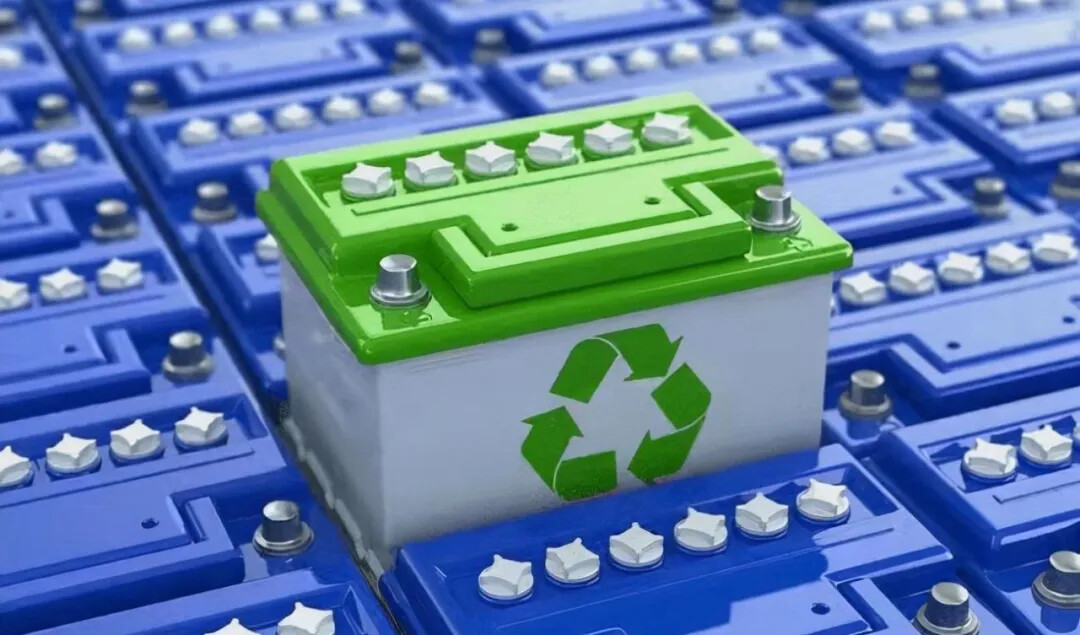Batteries are at the heart of every electric vehicle. Once ruled by lead-acid types, the market is now seeing a shift. Lithium batteries have become mainstream, and sodium batteries are on the rise. A new era of "three dominant players" is taking shape. In response, the State Administration for Market Regulation has rolled out a new mandatory national standard: Safety Technical Specifications for Lithium-Ion Batteries Used in Electric Bicycles. Backed by the Ministry of Industry and Information Technology, this regulation will take effect on November 1, 2024.

National standards lay the foundation for market evolution. As our society moves forward, fresh standards are essential to meet the ever-changing demands of daily life and industrial progress. Now that the lithium battery national standard has been approved, will it revolutionize the electric vehicle battery market? Could this spell the end for lead-acid batteries? And what about sodium batteries? Do they still have a shot at challenging lithium's dominance? We believe this new standard marks both a challenge and a golden opportunity. It's time for the whole industry to embrace change, adapt with agility, and drive innovation. Let's ride the wave of progress, grasp new market potentials, and move toward a future of sustainable development.

Could certified, safe lithium batteries finally shake off the shadow of low-end products and surge ahead?
For years, lithium batteries have carried a controversial reputation "prone to explosions" and seen as a ticking time bomb. Many people grew wary of lithium-powered vehicles. But in truth, most safety incidents are caused by illegal modifications and poor-quality batteries. The idea that "lithium equals danger" is largely a misunderstanding. If we want to see lithium batteries gain real traction in the electric vehicle market, safety must come first. That means setting firm regulations and solid standards to guarantee peace of mind for all.
Now, with the implementation of the new Technical Specifications, supervision of lithium batteries in e-bikes is getting a major upgrade. The move aims to crack down on shoddy batteries and unlawful alterations, tackling safety issues at their core. Once we remove the "thorn" of fear in consumers' minds, authentic, safe lithium batteries could finally break free from the stigma and step into an era of explosive growth.

Are lead-acid batteries and lithium batteries "competitors" or "complements"?
Currently, both lead-acid and lithium batteries hold a significant share in the electric vehicle market. Compared with lead-acid batteries, lithium batteries offer advantages in terms of lighter weight, longer lifespan, and better low-temperature performance. Meanwhile, lead-acid batteries are heavier, have a shorter service life and lower energy density, but are generally safer and more affordable. Just like no product is perfect, each battery type comes with its own strengths and weaknesses. For users who prioritize cost-effectiveness, safety, and practicality, lead-acid batteries remain a solid option. On the other hand, for those who require long range and frequent daily use, lithium batteries, with their lighter weight and longer lifespan, are likely the better choice.
So, which is better, lithium or lead-acid? In our view, the two are not necessarily competitors, but rather complementary technologies that meet different needs and coexist in the market. However, if the revised national standard continues to enforce the 55 kg weight limit for electric bicycles, the phase-out of lead-acid batteries may become inevitable. This could mark the end of the "lead-acid era" in the electric vehicle industry.

Can sodium batteries still challenge lithium's throne?
It would be premature and shortsighted to assume that the release of the Technical Specifications signals a future where lithium batteries will dominate the market exclusively. When it comes to choosing between lithium and sodium batteries, it is worth noting that sodium is thousands of times more abundant in the Eart's crust than lithium. Based on this fact, scientists believe that in the foreseeable future, sodium could become a more affordable and sustainable alternative for battery technology.
The government is actively encouraging the development of new battery technologies. Sodium batteries, in particular, combine several advantages: they offer the safety and cost-effectiveness of lead-acid batteries, while also sharing many benefits with lithium batteries, such as higher charge and discharge cycles (compared to lead-acid), longer driving ranges, and a service life of 8 to 10 years. They also excel in fast charging, reaching 80% capacity in just 10 minutes.Sure, the sodium battery industry is still in its early stages, with a lot of room to grow. But make no mistake: in the years ahead, sodium batteries are poised to become a powerful rival in the race for the next-generation energy solution.

Conclusion
The implementation of standardized systems not only improves quality but also helps reduce costs. As a result, more industries and enterprises are paying attention to the benefits of standardization. The release of the Mandatory National Standard for Lithium Batteries for Electric Bicycles is expected to address long-standing issues in the lithium battery market, promote the healthy development of the electric bicycle industry, and enhance the safety and wellbeing of consumers.
Overall, in terms of national standard requirements, product performance, user experience, environmental sustainability, and long-term cost-effectiveness, lithium batteries offer considerable value for application and promotion. We should have confidence in this standard, and the future of lithium batteries. As for whether the current tripartite structure of the battery market will undergo a fundamental shift, only time and the market can tell.
